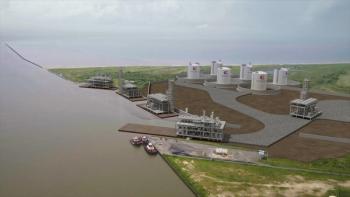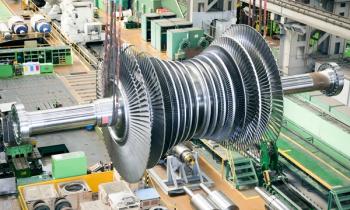
- July/August 2025
- Volume 66
- Issue 4
Assessing Risks, Safety, and Operational Challenges
Key Takeaways
- HAZOP reviews are critical for identifying hazards in turbomachinery, especially in larger, more powerful systems managing hazardous fluids.
- The HAZOP process involves dividing the system into subsystems, or "nodes," to evaluate each component's function and risks.
HAZOP reviews are a key process for identifying potential hazards and ensuring appropriate safety measures.
Until the 1950s, turbomachinery safety and risk assessments were often seen as non-technical. However, following serious accidents, specialists were appointed as safety advisers and risk analysts. Additionally, HAZOP (hazard and operability study) reviews became standard practice. As turbomachinery packages have become larger and more powerful, often operating at higher power ratings, temperatures, and pressures, they manage larger quantities of hazardous fluids, posing significant risks. Thus, safety considerations are crucial, particularly for medium- and large-sized machinery packages.
IS HAZOP NECESSARY?
Years of experience with turbomachinery have demonstrated that, alongside standard engineering reviews and safety assessments, a HAZOP review is crucial for critical plants. Safety concerns and risks should be addressed in a dedicated HAZOP meeting, with results documented and followed up. However, the literature on HAZOP is fragmented, with limited specific information regarding its application to turbomachinery.
HAZOP OVERVIEW
The objective of a HAZOP review is to identify potentially unusual occurrences within the various systems of turbomachinery packages and to anticipate their possible consequences. If any provisions, protections, or safety measures are found to be inadequate, recommendations for improvements will be made.
In a turbomachinery package, it is essential to divide the system into subsystems, which include components known as “nodes” in HAZOP terminology. When selecting nodes, the process flow—whether it involves the main turbomachinery flow, lubrication oil flow, or cooling flow—should ideally be followed, with nodes identified sequentially. Each node should represent an isolated subsystem that performs a specific task, such as increasing pressure, changing temperature, or removing liquid. For example, the knock-out drum at the suction of a turbocompressor can be considered a node, as well as each turbocompressor casing and each cooler or heat exchanger.
Before the HAZOP review begins, the nodes to be examined should be identified, highlighted, and listed. The HAZOP chairman must confirm this selection with team leads or managers before starting the review. While the list of nodes may be adjusted during the review process, it is essential to prepare a foundational list beforehand.
CHALLENGES AND GUIDELINES
Experience has shown that many HAZOP review teams waste valuable time trying to clarify the exact nature of a recommendation or required action. Future evaluations of that recommendation could completely change the proposed solution. If a solution or recommendation cannot be finalized within a reasonable timeframe (typically 5 to 10 minutes), it is advisable to request further study or evaluation of the problem and then move on to other areas of the review. The final assessment of any major recommendation should include a cost-benefit analysis, which is completed after the HAZOP review.
A common mistake in many HAZOP reviews is beginning the analysis without a clear understanding or agreement on how the turbomachinery package and surrounding facilities are intended to operate. Before discussing hazards and consequences, the team should agree on the basic operational philosophy of the turbomachinery package under review.
Amin Almasi is a Chartered Professional Engineer in Australia and the U.K. He is a senior consultant specializing in rotating equipment, condition monitoring, and reliability.
Articles in this issue
5 months ago
Turbomachinery International: July/August 2025Newsletter
Power your knowledge with the latest in turbine technology, engineering advances, and energy solutions—subscribe to Turbomachinery International today.




